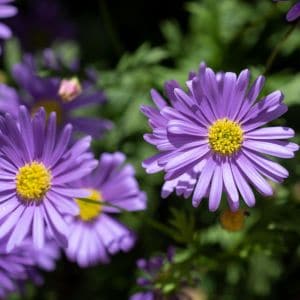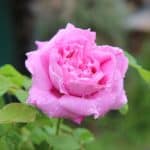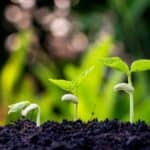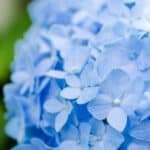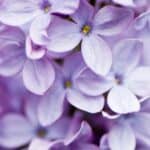If you want to attract butterflies to your garden late in the season, growing asters is a great choice. These hardy perennials bloom from late summer through fall, providing nectar when many other flowers have finished. Asters are easy to grow and are excellent for supporting butterflies and other pollinators in your butterfly garden.
This post may contain affiliate links.
You’ll find asters come in pretty colors like purple, white, and pink. They thrive best in full sun or part shade and prefer well-drained soil. With simple care like regular watering and occasional dividing, your asters can bloom year after year, creating a lively space full of butterflies.
Adding asters to your garden helps keep pollinators fed when food is scarce, making your outdoor space both beautiful and helpful for wildlife. You’re about to learn everything needed about growing asters that butterflies will love.
Related Article: Aster Varieties: A Guide to Choosing the Perfect Flower for Your Garden
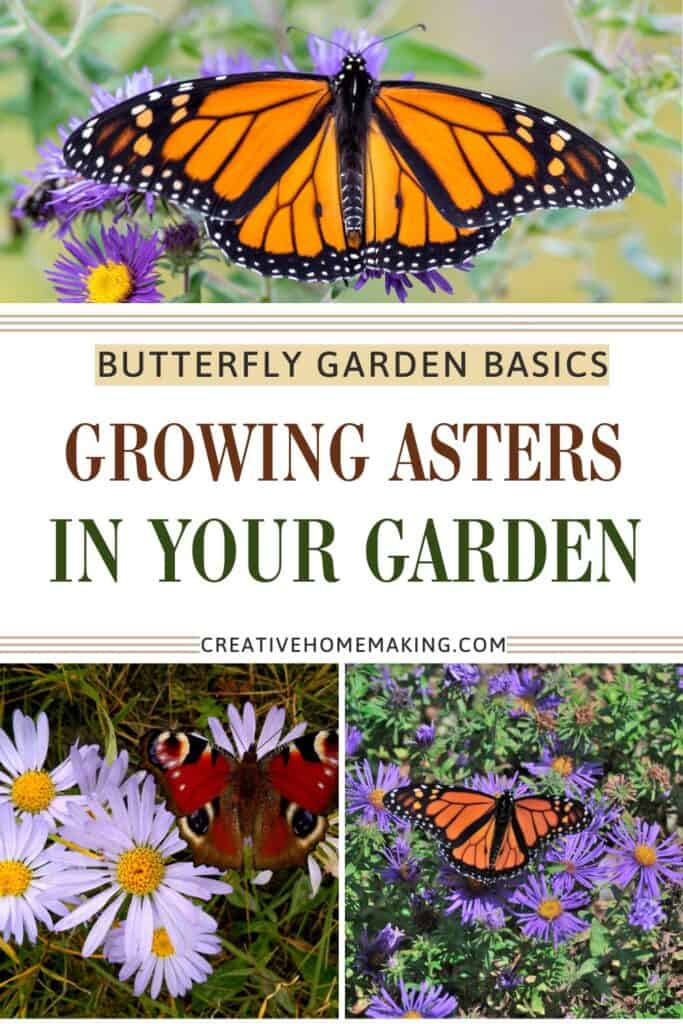
Selecting and Planting the Best Asters for Butterflies
You want asters that bloom late and offer lots of nectar to attract butterflies. Picking the right spot and time to plant them helps the flowers grow strong and healthy for the best butterfly visits. Good soil and proper planting also make a big difference.
Related Article: How to Grow Joe Pye Weed to Attract Butterflies
Choosing Butterfly-Friendly Aster Varieties
Look for late-blooming asters because butterflies need nectar when most other flowers are done for the season. Species like New England Aster (Symphyotrichum novae-angliae) and Smooth Blue Aster (Symphyotrichum laeve) are great choices. They produce daisy-like flowers rich in nectar.
Pick varieties with bright colors like purple, pink, or blue to catch butterflies’ attention. Also, native North American asters are often better for local butterflies. They fit well into your local ecosystem and provide reliable food.
Related Article: Growing Coneflowers from Seed: A Beginner’s Guide
Finding the Ideal Location and Soil
Choose a spot with full sun. Asters need at least six hours of sunlight daily to bloom well. Butterflies also prefer open, sunny areas where they can easily land on flowers.
The soil should be well-draining but rich in nutrients. You can improve poor soil by mixing in compost or organic matter. Avoid heavy clay soils that hold too much water, as asters don’t like soggy roots.
Related Article: How to Grow Verbena for a Butterfly-Friendly Garden
Planting Techniques for Healthy Growth
Space your asters about 1 to 3 feet apart depending on the variety. This lets air flow around plants and cuts down on disease risks.
Related Article: When to Plant Sunflowers: A Simple Guide for Thriving Blooms
When you plant, dig a hole slightly wider and the same depth as the root ball. Place the plant gently and fill in with soil, pressing lightly. Water well after planting to settle the soil and help roots start growing.
Adding mulch around your growing asters keeps moisture in and prevents weeds. Just keep mulch a few inches away from the stems to avoid rot.
Related Article: Why Creeping Phlox is the Perfect Plant for Butterfly Gardens
Timing Your Planting for Maximum Bloom
Plant asters in early spring or fall. Spring planting gives roots time to grow before blooming late summer to fall.
If you plant in fall, aim to do it at least six weeks before the first frost. This helps the roots establish and brings a strong showing the next year.
Regular watering after planting is important, especially during dry spells. This supports healthy root growth and a fuller bloom season.
Related Article: How to Grow Zinnias from Cuttings: Easy Steps for a Blooming Garden
Creating and Maintaining a Thriving Butterfly Garden
To grow asters for butterflies, you need to mix them well with other nectar-rich plants. Watering, mulching, and pest management are also key to keeping your garden healthy and inviting for pollinators.
Related Article: Top 11 Butterfly-Friendly Plants for Your Garden
Combining Asters with Other Pollinator Plants
Growing asters alongside other flowers that bloom at different times. This provides a constant supply of nectar throughout the season. Good options include coneflowers, milkweed, and goldenrod, which attract a wide variety of butterflies.
Use a mix of colors and shapes to appeal to different pollinators. Make sure most plants get at least 6 hours of sunlight daily to thrive. Group plants by water needs to make care easier and prevent overwatering some areas.
Related Article: Why Every Butterfly Garden Needs Milkweed
Watering and Mulching Strategies
Water your garden deeply once a week, especially during dry spells. Asters prefer moist soil but avoid soggy conditions to prevent root problems. Check soil moisture regularly.
Apply mulch around your plants to keep soil cool and reduce weeds. Use organic mulch like shredded bark or straw, about 2 to 3 inches thick. Mulching also helps soil retain moisture, which supports healthy root growth.
Organic Pest and Disease Management
Keep your garden chemical-free by using natural methods to control pests. Introduce beneficial insects like ladybugs and lacewings that eat harmful bugs.
If you notice fungal issues, remove affected leaves promptly and improve air circulation by spacing plants properly. Water early in the morning to allow leaves to dry during the day, reducing disease risk.
Using these strategies will keep your asters and other plants healthy without harsh chemicals.
Follow my Butterfly Garden board on Pinterest.
